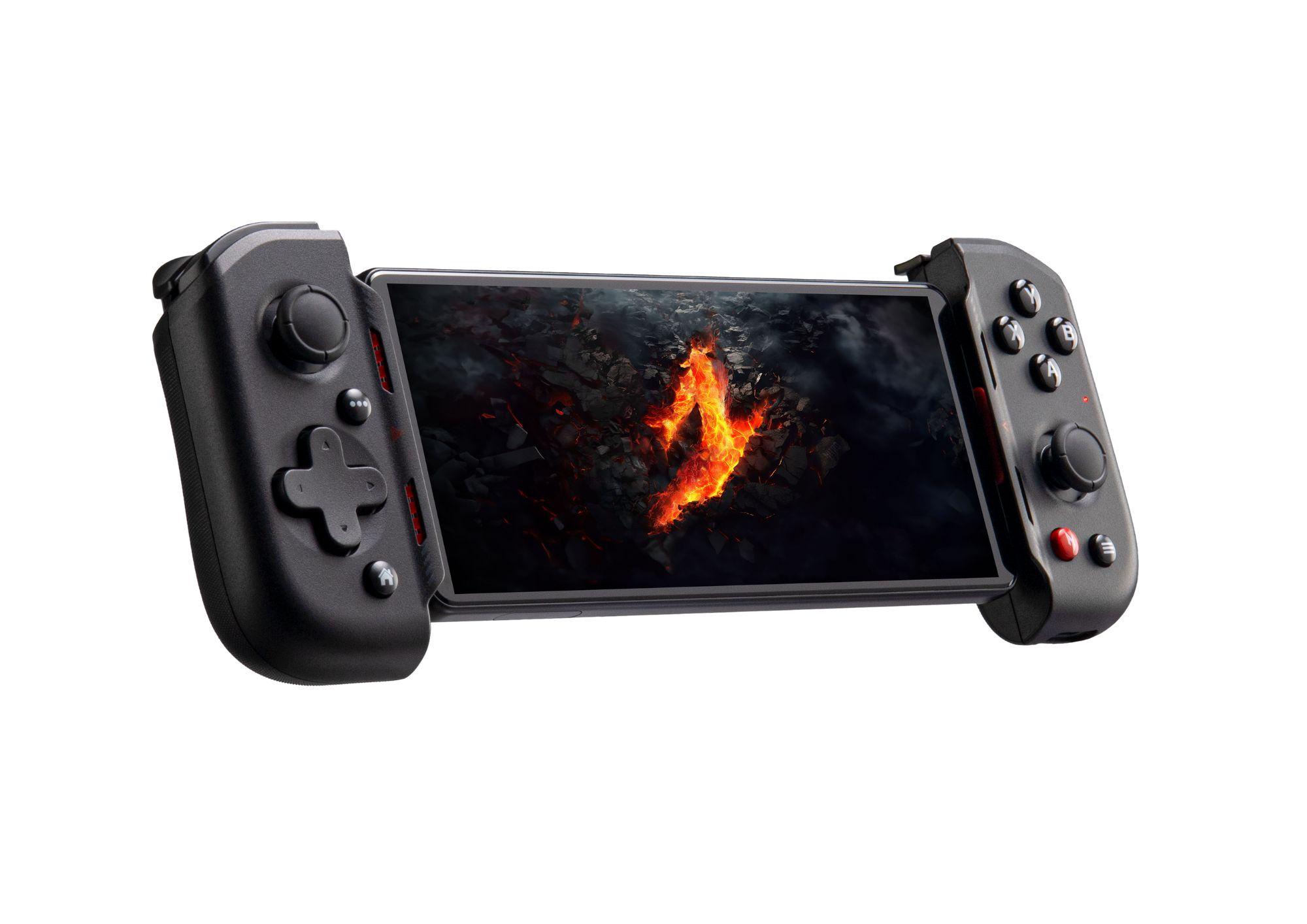Table of Contents
- Understanding the Evolution of Game Controller Design
- Exploring Key Features of High-Performance Game Controllers
- The Impact of Ergonomics on Gaming Experience
- Choosing the Right Game Controller for Your Platform
- Future Trends in Game Controller Technology
- Q&A
- Future Outlook


Understanding the Evolution of Game Controller Design
- Early Designs: The journey of game controller design began in the late 1970s and early 1980s, predominantly focused on the classic joystick formats. Initial prototypes featured simplistic layouts with a joystick for movement and a single button for actions. These designs were functional but limited, catering primarily to arcade-style games that ruled the gaming landscape. The importance of ergonomics was not fully realized, leading to controllers that were often awkward to hold and operate for extended sessions.
- Technological Advancements: As gaming technology advanced through the 1990s and early 2000s, controller designs began to evolve rapidly. The introduction of analog sticks revolutionized gameplay, allowing for nuanced movement that was previously impossible with a digital joystick. Console makers started emphasizing user experience, integrating features like vibration feedback and multi-button layouts, which allowed for a variety of commands and control schemes in more complex games.
- Current Trends: Today’s controllers are marvels of innovation, often equipped with motion sensing, touch pads, and even adaptive triggers. Companies like Sony and Microsoft have responded to player feedback, crafting designs that cater to both casual and hardcore gamers. Modern controllers emphasize customization, with options for programmable buttons and varying sizes to accommodate different hand shapes. The emphasis is on providing immersive experiences, evidenced by controllers that are now integrated into virtual and augmented reality environments.
Exploring Key Features of High-Performance Game Controllers
When it comes to gaming, the controller is not merely a peripheral; it’s a vital extension of the player’s abilities. High-performance game controllers are designed with several key features that significantly enhance the gaming experience. Ergonomics is at the forefront, ensuring that the controller fits comfortably in the hands for long gaming sessions. A well-designed controller minimizes fatigue and promotes fluid movement, allowing gamers to concentrate on the challenge at hand rather than discomfort. Factors that contribute to ergonomic excellence include:
- Grip Texture: Non-slip materials that provide a solid hold.
- Button Placement: Strategically located buttons for easy access without adjusting grip.
- Weight Distribution: Balancing the controller to feel natural in the hands.
Additionally, responsiveness is a hallmark of high-performance controllers. Features like mechanical switches, adjustable triggers, and customizable sensitivity settings allow players to tailor the controller’s behavior to match their unique gaming style. This level of responsiveness is crucial in fast-paced games, where every millisecond counts. The inclusion of features such as:
| Feature | Description |
|---|---|
| Mechanical Switches | Provide tactile feedback and durability, enhancing precision. |
| Adjustable Triggers | Allow players to modify how far a button must be pressed for activation. |
| Customizable Sensitivity | Lets gamers adjust the sensitivity of thumbsticks to their preference. |
Lastly, the integration of advanced technology is transforming the landscape of gaming controllers. Many high-performance models now include features like wireless connectivity, haptic feedback, and programmable macro buttons. These innovations provide a competitive edge and enhance immersion in gameplay. Players can also take advantage of customizable LED lighting and vibration settings that not only personalize their controllers but can also provide additional in-game notifications. These technological advancements ensure that players not only keep up with the game but dominate it with style and efficiency.


The Impact of Ergonomics on Gaming Experience
In the dynamic world of gaming, the importance of ergonomics cannot be overstated. A well-designed game controller not only enhances gameplay but also significantly reduces the risk of injury during prolonged sessions. An ergonomic controller aligns with the natural posture of the hands and wrists, providing comfort and improving overall gaming performance. By integrating user-friendly designs and customizable features, manufacturers promote hours of uninterrupted gaming enjoyment.
Several factors contribute to an ergonomic gaming experience, including:
- Grip Shape: Controllers that contour to the shape of the hand reduce strain and fatigue.
- Button Layout: Well-placed buttons ensure that players can access essential functions without awkward movements.
- Weight Distribution: A balanced controller minimizes wrist stress and encourages relaxed gameplay.
When choosing a game controller, it’s beneficial to pay attention to the specific ergonomic features that best suit individual preferences. A simple comparison can aid in understanding how different designs cater to various gaming styles. Below is a brief overview of a few popular options available in the market:
| Controller Model | Key Ergonomic Feature | Best For |
|---|---|---|
| Controller A | Textured grips | Action games |
| Controller B | Adjustable sensitivity | Racing games |
| Controller C | Lightweight design | Long sessions |


Choosing the Right Game Controller for Your Platform
When selecting a game controller, it’s essential to consider the specific platform you’re using. Different consoles and PCs may require different types of controllers, each offering unique features. Here are some factors to keep in mind:
- Compatibility: Ensure that the controller is designed for your gaming platform. For instance, Xbox controllers work seamlessly with Xbox consoles and Windows PCs, while PlayStation controllers are optimized for their respective consoles.
- Ergonomics: Comfort is key during long gaming sessions. Look for a controller that fits comfortably in your hands, with responsive buttons and triggers that make gameplay seamless.
- Functionality: Some controllers come with additional features like remappable buttons, built-in audio, and vibration feedback that can enhance your gaming experience.
Another important aspect to evaluate is the controller’s build quality and price point. Higher-priced options often provide better durability and advanced features, but there are plenty of budget-friendly controllers that perform admirably for casual gaming. Consider the following when making your decision:
| Price Range | Build Quality | Features |
|---|---|---|
| Under $50 | Basic | Standard buttons and connectivity |
| $50 – $100 | Medium | Enhanced ergonomics, some customizable options |
| Above $100 | High | Premium features, extensive customization, robust build |
consider the type of games you frequently play. Different game genres may benefit from specific controller styles—first-person shooters might require quick reflexes and precision found in some joystick designs, while puzzle and RPG games could be more compatible with controllers that emphasize button layouts. Ultimately, investing time into selecting the right controller suited to your gameplay style and platform will significantly enhance your gaming experience.


Future Trends in Game Controller Technology
The landscape of gaming is constantly evolving, and so too is the technology behind game controllers. Innovations in haptic feedback and adaptive triggers are expected to revolutionize player interaction. Haptic feedback systems will allow gamers to experience sensations tailored to the game environment, from the feel of terrain underfoot to the distinct vibrations of in-game events. Meanwhile, adaptive triggers can provide resistance that simulates real-life actions, giving players a more immersive experience that deepens their engagement with the game world.
Another anticipated trend is the integration of AI and machine learning in game controllers. By analyzing player behavior, future controllers could customize settings, suggest gameplay strategies, or dynamically adjust difficulty levels. This technology will not only enhance player experience but also make gaming more accessible to a wider audience by adapting to individual skill levels and preferences. The potential for voice command integration also opens up new avenues for in-game communication and control.
the focus on sustainability will drive the next wave of game controller designs. Eco-friendly materials will take precedence, reducing the environmental impact of production and waste. Charging solutions, such as solar power capabilities or energy-efficient designs, will also become standard features. As gamers become increasingly conscious of their environmental footprint, brands that prioritize sustainability will stand out in a competitive market.




0 Comments